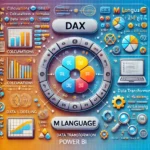BigQuery vs. Redshift: Navigating Data Warehousing Titans
In the world of data warehousing, two giants have emerged as frontrunners: BigQuery and Redshift. As organizations increasingly harness the power of data for strategic decisions, understanding the differences between these platforms becomes crucial. In this blog post, we’ll delve into the key features of BigQuery and Redshift, helping you make an informed choice for your data warehousing needs.
Introducing BigQuery and Redshift
BigQuery: Developed by Google, BigQuery is a serverless, highly scalable, and cloud-native data warehousing and analytics platform. It’s designed to handle vast amounts of data, performing complex queries at blazing speeds using a distributed architecture. BigQuery’s integration with Google Cloud services provides seamless interaction and data analysis capabilities.
Redshift: Amazon Redshift is Amazon Web Services’ data warehousing solution, optimized for online analytic processing (OLAP). It’s based on a columnar storage format and employs massively parallel processing (MPP) to provide fast query performance. Redshift is particularly favored by businesses operating within the Amazon ecosystem, thanks to its easy integration with other AWS services.
https://synapsefabric.com/2023/08/18/bigquery-vs-sql-unveiling-the-differences-and-making-the-right-choice/
Head-to-Head Comparison
Let’s take a deep dive into the major differences between BigQuery and Redshift:
| Aspect | BigQuery | Redshift |
|---|---|---|
| Architecture | Serverless, fully managed cloud-based solution. | Managed service, requires more configuration. |
| Scalability | Automatic scaling for large datasets. | Manual scaling based on cluster configuration. |
| Performance | In-memory processing for rapid queries. | Columnar storage and MPP for optimized queries. |
| Data Formats | Supports semi-structured and nested data. | Primarily optimized for structured tabular data. |
| Query Language | Utilizes a variant of SQL for querying. | Standard SQL for querying and extensions. |
| Integration | Seamlessly integrates with Google Cloud services. | Deep integration within the AWS ecosystem. |
| Cost | Pay-as-you-go model, often more cost-effective. | Costs can escalate with larger data volumes. |
| Ease of Use | User-friendly interface with easy setup. | Requires more expertise in cluster management. |
| Use Cases | Well-suited for large-scale data analytics. | Great for OLAP and integration with AWS tools. |
| Security | Provides robust security features with IAM. | Strong security mechanisms with IAM and VPC. |
Choosing the Right Fit
The decision between BigQuery and Redshift hinges on your organization’s specific needs and priorities:
BigQuery is an excellent choice for organizations that require rapid processing of massive datasets and want a fully managed, serverless solution. It’s particularly advantageous for businesses within the Google Cloud ecosystem, offering seamless integration and user-friendly interfaces.
Redshift shines for those deeply invested in the Amazon AWS ecosystem. It’s ideal for OLAP workloads and businesses seeking powerful analytic capabilities within a cloud environment. However, it requires more hands-on configuration and management compared to BigQuery.
Both BigQuery and Redshift are heavyweights in the data warehousing arena, catering to different needs and ecosystems. The choice depends on your data volume, analytics requirements, existing cloud ecosystem, and the level of management you prefer. By understanding the nuances of each platform, you can make an informed decision that aligns with your organization’s data strategy and growth ambitions.






